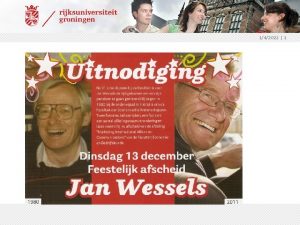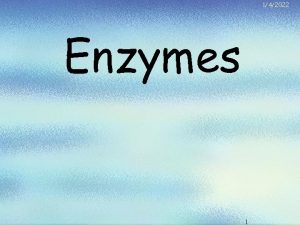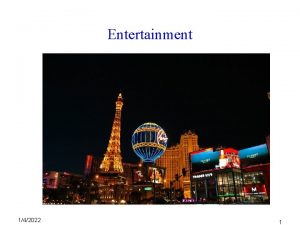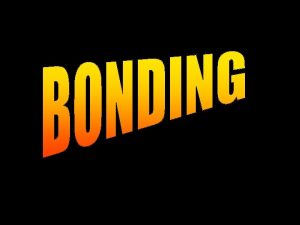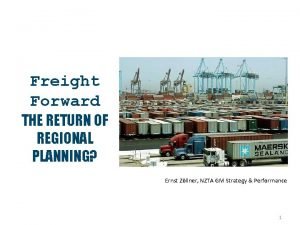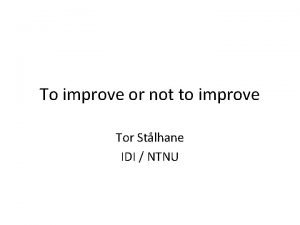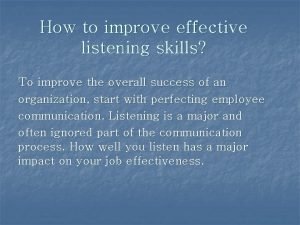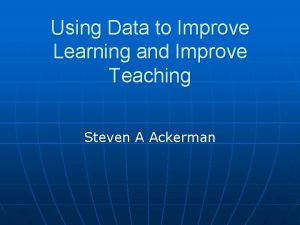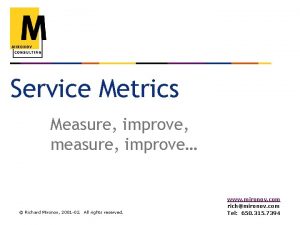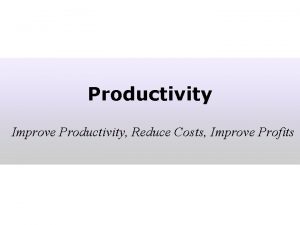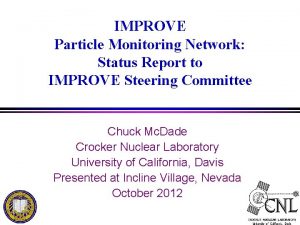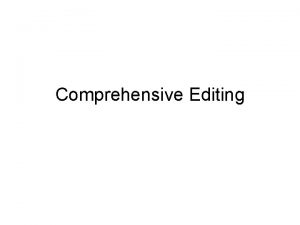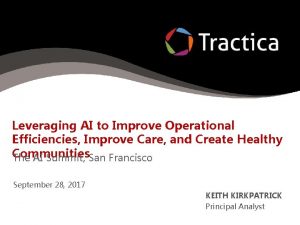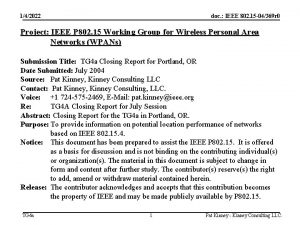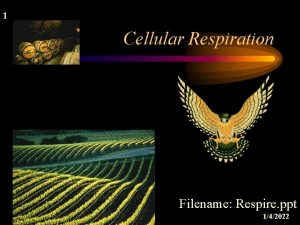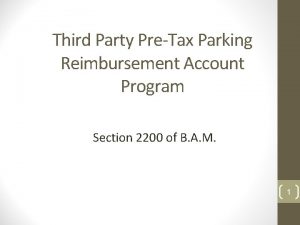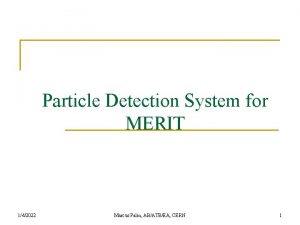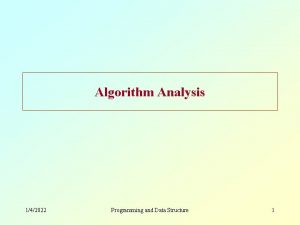142022 1 142022 2 142022 3 Improve the





























- Slides: 29

1/4/2022 1

1/4/2022 2

1/4/2022 3

• Improve the baseline agents by designing more complex RL techniques –if needed- to win majority of the games. • Train the agents with other adaptive agents and with previous version of itself to make it more robust. • Run experiments, in collaboration with USC, to see how the baseline agents perform against other players/agents. • Investigate how will cooperation and competition between multiple RL agents affect the learning process. • Novel algorithms will be considered that deal with partnership games (two players on same team, where we will use aspects of centralized training and decentralized execution). • To generate novelty, hard/soft Attention algorithms will be utilized to decide on colluding agents within the environment. 1/4/2022 4

• In Monopoly, novelties can appear in the form of behavior changes of external agents (not the SAIL-ON agent): multiple agents colluding to win or to knock out another player. Thus, The game play may change from individual play to partnership play. • Given the novelty hierarchy recommendations, this can be categorized as either: • Interaction Novelty: Change in the distribution of interactions (e. g. , trades in Monopoly) between two players would change from the non-colluding to the colluding instance. • Goal Novelty: The goal of the external agents changes from maximizing the individual reward to maximizing the joint rewards. • These collusions could also change over time, one player might switch from supporting a certain player to competing against him/her. A player may also form a collusion with another player against whom it was competing previously. • We differentiate collusion from cheating: If players violate the game rules (for instance by exposing their cards), this is not considered collusion but cheating. 1/4/2022 5

• How can we learn the complex game rationale using RL techniques? • How can we learn complex human player behavior that may not defined in the game rules? • Are we able to detect novelty in the environment and adapt to it? Can we predict player behavior changes (collusion vs. cooperation with other players)? • How can we learn to reason about the given situation (i. e. , current game board) and sometimes beat the human logic? • How to play partnership games using RL? • Can we use game theory to learn different player strategy and explore if reaching an equilibrium might be possible in such complex environments? • How will agents communicate/interact and how will this communication introduce novelties in the environment? 1/4/2022 6

1/4/2022 7

1/4/2022 8

• Marina Haliem, Trevor Bonjour, Aala Alsalem, Shilpa Thomas, Vaneet Aggarwal, Bharat Bhargava, and Mayank Kejriwal, “Learning Monopoly Gameplay: A Hybrid Model-Free Deep Reinforcement Learning and Imitation Learning Approach”, Submitted to The IEEE Transactions on Games, (Feb. 2021). • Marina Haliem, Vaneet Aggarwal, and Bharat Bhargava, “Novelty Detection and Adaptation: A Domain Agnostic Approach”, in Proceedings of the International Semantic Intelligence Conference (ISIC 2021), Feb. 2021. • Marina Haliem, Vaneet Aggarwal, and Bharat Bhargava, “Ada. Pool: An Adaptive Model-Free Ride-Sharing Approach for Dispatching using Deep Reinforcement Learning”, in Proceedings of the 7 th ACM International Conference on Systems for Energy-Efficient Buildings, Cities, and Transportation Environments (Build. Sys 2020) and Under Revision at The IEEE Transactions on Intelligent Transportation Systems, (T-ITS). • Kaushik Manchella, Marina Haliem, Vaneet Aggarwal, and Bharat Bhargava, “Pass. Good. Pool: Joint Passengers and Goods Fleet Management with Reinforcement Learning aided Pricing, Matching, and Route Planning”, Under Revision at The IEEE Transactions on Intelligent Transportation Systems, (T-ITS). • Kaushik Manchella, Marina Haliem, Vaneet Aggarwal, and Bharat Bhargava, “A Distributed Delivery-Fleet Management Framework using Deep Reinforcement Learning and Dynamic Multi-Hop Routing”, Workshop on Machine Learning for Autonomous Driving (ML 4 AD), Dec. 2020, at Neur. IPS 2020. 1/4/2022 9

1/4/2022 10

§ Our agent starts by imitating a strong rule-based baseline to initialize its strategy and avoid learning from scratch. § We use DQN to train our baseline agent to take the best possible action, given a set of possible actions and a representation of the state space. § As learning proceeds, our agent learns a winning strategy and its exploration rate decreases in favor of more exploitation of its own experience memory using deep RL. 1/4/2022 11

1/4/2022 12

1/4/2022 13

We represent the action space using a 66 -dimensional vector. We consider 12 different actions, 6, associated with a property group, and 6 that are not. Once an action is selected by the agent, we use handwritten rules to select parameters, if required. 1/4/2022 14

We use a dense reward function defined as the ratio of the current players net-worth to sum of net-worth of other active players. 1/4/2022 15

1/4/2022 16

1/4/2022 17

1/4/2022 18

1/4/2022 19

1/4/2022 20

1/4/2022 21

1/4/2022 22

1/4/2022 23

1/4/2022 24

1/4/2022 25

• Can we find a structured representation to quantify adaption? • Can the structured representations be generalized? • Can we detect the changes in representation pre-novelty vs post-novelty? • What kind of distance functions need to be defined based on the difficulty metrics? • Can we approximate the edit distance between pre-novelty and post-novelty representation (RED)? • Is there an approximation model that can adapt to generalized domains each with their own definition of novelty? 1/4/2022 26

1/4/2022 27

1/4/2022 28

1/4/2022 29
 Bổ thể
Bổ thể Từ ngữ thể hiện lòng nhân hậu
Từ ngữ thể hiện lòng nhân hậu Tư thế ngồi viết
Tư thế ngồi viết V cc cc
V cc cc Thơ thất ngôn tứ tuyệt đường luật
Thơ thất ngôn tứ tuyệt đường luật Làm thế nào để 102-1=99
Làm thế nào để 102-1=99 Hát lên người ơi
Hát lên người ơi Sự nuôi và dạy con của hổ
Sự nuôi và dạy con của hổ Diễn thế sinh thái là
Diễn thế sinh thái là đại từ thay thế
đại từ thay thế Vẽ hình chiếu vuông góc của vật thể sau
Vẽ hình chiếu vuông góc của vật thể sau Công thức tính thế năng
Công thức tính thế năng Tỉ lệ cơ thể trẻ em
Tỉ lệ cơ thể trẻ em Thế nào là mạng điện lắp đặt kiểu nổi
Thế nào là mạng điện lắp đặt kiểu nổi Lời thề hippocrates
Lời thề hippocrates Vẽ hình chiếu đứng bằng cạnh của vật thể
Vẽ hình chiếu đứng bằng cạnh của vật thể độ dài liên kết
độ dài liên kết Quá trình desamine hóa có thể tạo ra
Quá trình desamine hóa có thể tạo ra Môn thể thao bắt đầu bằng chữ f
Môn thể thao bắt đầu bằng chữ f Hát kết hợp bộ gõ cơ thể
Hát kết hợp bộ gõ cơ thể Sự nuôi và dạy con của hổ
Sự nuôi và dạy con của hổ điện thế nghỉ
điện thế nghỉ Các loại đột biến cấu trúc nhiễm sắc thể
Các loại đột biến cấu trúc nhiễm sắc thể Nguyên nhân của sự mỏi cơ sinh 8
Nguyên nhân của sự mỏi cơ sinh 8 Trời xanh đây là của chúng ta thể thơ
Trời xanh đây là của chúng ta thể thơ Chó sói
Chó sói Thiếu nhi thế giới liên hoan
Thiếu nhi thế giới liên hoan Phối cảnh
Phối cảnh Một số thể thơ truyền thống
Một số thể thơ truyền thống Thế nào là hệ số cao nhất
Thế nào là hệ số cao nhất






























